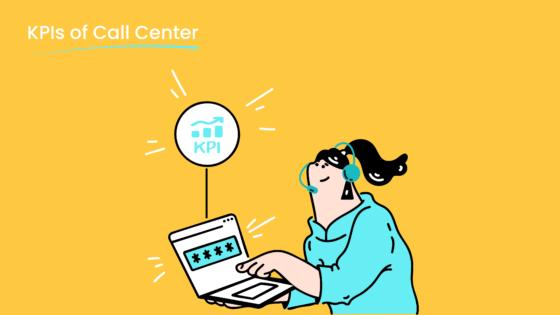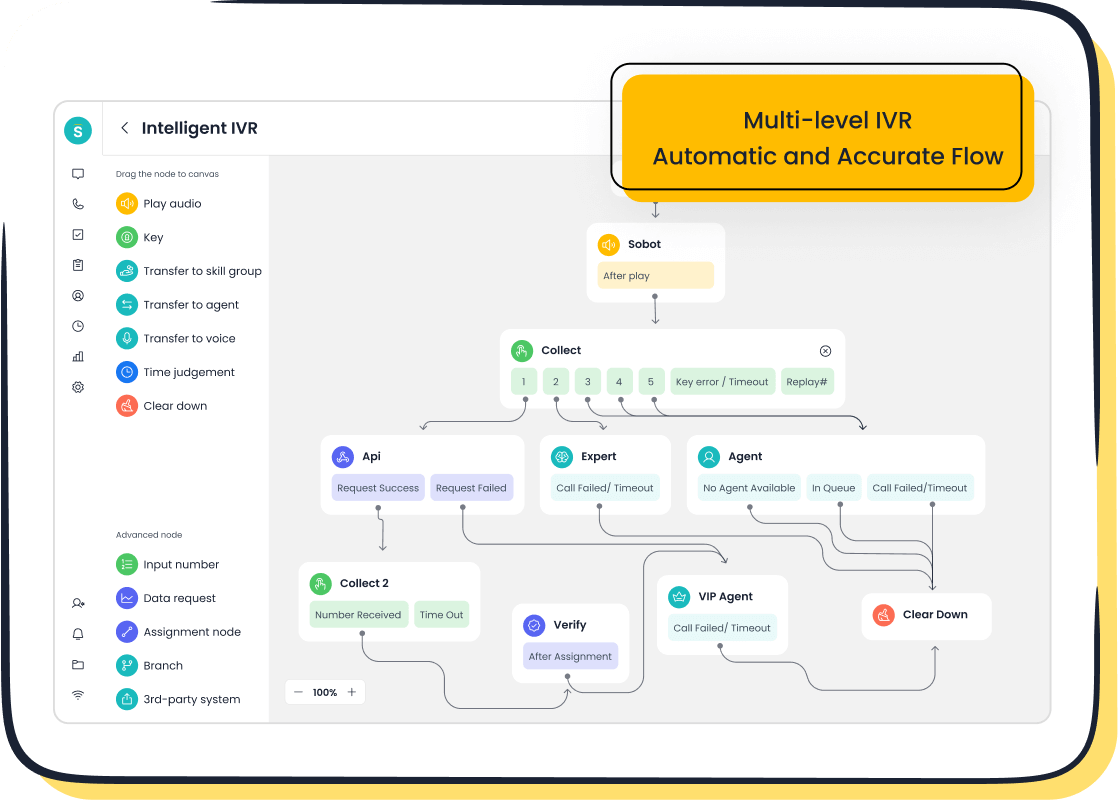NPS vs CSAT vs CES Which Is the Top KPI?

Choosing the right KPIs for customer service is crucial for success. Net Promoter Score (NPS) stands out as the top metric for predicting long-term business growth and customer loyalty. Research shows a 7% increase in NPS can boost revenue growth by 1%. While NPS measures the overall relationship, CSAT and CES are essential diagnostic tools. CSAT measures customer satisfaction with specific interactions, and CES tracks the effort required. This guide helps businesses understand how to use NPS, CSAT, and CES together to improve the customer experience. A powerful Sobot call center, enhanced with Sobot AI, can track these metrics effectively.
Understanding Key KPIs for Customer Service
Businesses use several key performance indicators (KPIs) to measure success. Understanding these customer experience metrics is the first step toward improvement. The most important KPIs for customer service are NPS, CSAT, and CES. Each one provides a unique view of your performance.
Defining NPS: The Loyalty Metric
Net Promoter Score (NPS) is a powerful metric that measures long-term customer loyalty. It asks customers a single question: "On a scale of 0-10, how likely are you to recommend our company to a friend or colleague?" Based on their answers, customers fall into three groups:
- Promoters (9-10): Your most enthusiastic and loyal customers.
- Passives (7-8): Satisfied but not loyal customers.
- Detractors (0-6): Unhappy customers who can damage your brand.
The NPS formula is simple: % Promoters − % Detractors. For example, if 80% of your customers are Promoters and 10% are Detractors, your NPS is 70. This score is a strong indicator of future growth and is one of the most watched customer loyalty metrics. A high NPS suggests strong customer relationships.
Defining CSAT: The Satisfaction Metric
Customer Satisfaction Score (CSAT) measures short-term happiness. This customer satisfaction metric gauges how a customer feels after a specific interaction, like a support call or a purchase. Businesses typically use customer satisfaction surveys with a direct question, such as "How satisfied were you with your experience today?"
The CSAT score is the percentage of "satisfied" responses. Companies use various scales, including unipolar ratings from 1-5 or simple happy/sad faces. CSAT gives you immediate feedback on individual touchpoints. This helps you quickly identify and fix problems in the customer journey. High CSAT scores often point to excellent service moments.
Defining CES: The Effort Metric
Customer Effort Score (CES) measures how easy it is for a customer to get help. Research shows that reducing customer effort is a key driver of customer loyalty. A typical CES question asks customers to agree or disagree with a statement like, "The company made it easy for me to handle my issue."
The CES survey uses a simple scale, often from "Strongly Disagree" to "Strongly Agree." A low-effort experience is the goal. CES helps you find and remove friction in your processes. When CES scores improve, it means your service is becoming more efficient. This is one of the most practical KPIs for customer service teams to track.
Core Differences: NPS vs CSAT vs CES

Understanding the core differences between NPS, CSAT, and CES is vital. Each metric asks a different question to reveal a unique aspect of the customer experience. While all are valuable KPIs for customer service, they serve distinct purposes. One measures the entire relationship, while the others zoom in on specific moments.
Here is a simple breakdown of what each metric focuses on:
| Metric | Focus | Best For |
|---|---|---|
| NPS | Long-term loyalty and overall brand perception | Predicting business growth and benchmarking overall sentiment |
| CSAT | Short-term satisfaction with a specific interaction | Pinpointing friction points and gathering immediate feedback |
| CES | The ease or difficulty of a specific interaction | Identifying and removing obstacles in service processes |
Measuring the Overall Relationship
Net Promoter Score (NPS) measures the overall health of your customer relationship. It is not about a single purchase or support ticket. Instead, an NPS survey asks customers to reflect on their entire experience with your brand. This makes it a powerful tool for gauging long-term customer loyalty. The goal of the NPS methodology is to predict customer behavior, such as repeat purchases and referrals.
Frederick F. Reichheld, who created the NPS system, found that the "likelihood to recommend" question was the best predictor of a company's growth.
A high NPS indicates a strong, positive relationship. Promoters are more likely to make repeat purchases, refer new customers, and forgive occasional service issues. This predictive power makes NPS a leading indicator of sustainable business growth. Companies use this metric to benchmark their overall performance and make strategic decisions about product improvements and service enhancements. The NPS survey is typically sent periodically, such as quarterly or annually, to track how brand perception changes over time.
Measuring a Specific Interaction
Customer Satisfaction (CSAT) provides a snapshot of a customer's happiness at a specific moment. This metric is transactional. It measures satisfaction immediately following a particular interaction. This focus on the "here and now" makes CSAT an excellent diagnostic tool. It helps teams gather actionable insights into service moments that need improvement.
Common triggers for a CSAT survey include:
- After a support ticket is resolved
- Following a purchase or transaction
- Immediately after a phone call with a contact center agent
- Upon completing the customer onboarding process
For the most accurate results, businesses should measure CSAT as close to the interaction as possible. This ensures the experience is fresh in the customer's mind. While a high CSAT score is great, it does not always predict long-term customer loyalty. A customer can be satisfied with one interaction but still feel neutral about the brand overall. Therefore, CSAT is best used to optimize individual touchpoints within the customer experience.
Measuring the Ease of Service
Customer Effort Score (CES) also measures a specific interaction, but it focuses on a different angle: effort. The CES question asks how easy it was for a customer to get their issue resolved. This metric operates on a simple but powerful principle. Reducing customer effort is a primary driver of loyalty.
Research from Harvard Business Review found that reducing the work a customer must do to get a problem solved builds loyalty more effectively than "delighting" them. High-effort experiences are a major source of frustration and can quickly lead to churn.
According to CEB, the firm that introduced the CES concept, "Ninety-six percent of customers with a high-effort service interaction become more disloyal."
A low CES score is the goal. It means your processes are smooth and efficient. Companies use CES to identify and eliminate friction in key service interactions, such as:
- Resolving a billing issue
- Navigating a website to find information
- Booking an appointment
- Processing a product return
Improving your CES score directly enhances the customer experience by making service feel effortless. Like CSAT, CES is a transactional metric that provides specific, actionable feedback to improve your operations.
Applying Each KPI to Improve Customer Experience
Measuring KPIs is only half the battle. The real value comes from using the data to create a better customer experience. A strong customer experience program turns feedback into action. Sobot's Omnichannel Solution provides a unified platform to track these customer experience metrics across all channels. It brings chat, email, and voice data into one place. This allows businesses to see the full picture and make smarter decisions.
Using NPS for Growth Strategy
Net Promoter Score (NPS) is more than just a number; it is a powerful tool for a company's growth strategy. Businesses that focus on their NPS often see significant revenue gains. For example, analysis from Bain showed that companies with top-tier NPS ratings achieved more than double the revenue growth of their competitors. This connection between NPS and growth makes it a vital metric for long-term planning.
Companies use NPS feedback to guide important business decisions.
- Product Development: Detractor comments can highlight specific product flaws. Fixing these issues can quickly improve customer satisfaction and turn detractors into promoters.
- Market Expansion: High NPS scores in certain segments show where a brand is strongest. This data helps businesses identify markets where they have a competitive edge and can expand successfully.
- Customer Retention: Apple's retail stores famously contacted unhappy customers within 24 hours. This simple action helped rebuild relationships and generated millions in additional sales.
A high NPS indicates a strong brand reputation. It creates brand advocates who attract new customers through word-of-mouth. This "earned growth" is a key outcome of a successful customer experience strategy. Tracking NPS helps businesses prioritize resources and build products that customers truly value.
Using CSAT for Touchpoint Optimization
Customer Satisfaction (CSAT) provides immediate feedback on specific interactions. This makes it the perfect tool for optimizing individual customer touchpoints. A low CSAT score after a support call or online checkout is a clear signal that something needs to be fixed. By tracking CSAT, businesses can pinpoint friction in the customer journey and take action.
The goal is to make every interaction a positive one. A high CSAT score shows that a specific part of your service is working well.

This is where a powerful contact center solution becomes essential. Sobot's Voice/Call Center offers features designed to improve CSAT.
- Drag-n-Drop IVR: If CSAT data shows customers are frustrated with complex phone menus, a business can easily redesign the call flow using the drag-n-drop interface.
- Smart Routing: Low CSAT scores might reveal that calls are going to the wrong agents. Smart routing rules can be adjusted to ensure customers connect with the agent best equipped to handle their issue on the first try.
The success of Weee! demonstrates the power of this approach. Weee! used Sobot's voice product to increase their customer satisfaction score to 96% and boost agent efficiency by 20%. By optimizing their voice channel, they directly improved customer satisfaction and operational performance. This shows how acting on CSAT feedback can produce tangible results.
Using CES to Reduce Service Friction
Customer Effort Score (CES) helps businesses find and eliminate obstacles in their service processes. The core idea is simple: the easier you make it for customers, the more loyal they will become. Research from Harvard Business Review found that reducing customer effort is a more effective driver of loyalty than "delighting" customers. In fact, 96% of customers with a high-effort service interaction become more disloyal.
Improving your CES score means making your customer experience feel effortless. Customer feedback from CES surveys can highlight specific areas of friction.
- Repetitive Information: More than 70% of consumers believe companies should collaborate internally so they do not have to repeat information. A low CES score often points to this problem.
- Channel Hopping: Customers want a consistent experience across all channels. A high-effort CES score may mean it is difficult for them to switch from a chatbot to a live agent.
Sobot's solutions are designed to reduce customer effort and improve CES. The ticketing system ensures that when a case is transferred, the new agent has the full customer history. This eliminates the need for customers to repeat their issues. Additionally, AI-powered chatbots provide 24/7 self-service options, allowing customers to resolve simple issues instantly without waiting for an agent. By focusing on CES, businesses can create a smoother, more efficient customer experience that builds lasting loyalty. These are some of the most important kpis for customer service.
Why NPS is the Top KPI for Business Health

While CSAT and CES offer valuable insights into specific interactions, Net Promoter Score (NPS) provides the clearest view of overall business health. It is more than a metric; it is a system for driving profitable growth. The predictive power of NPS makes it a top-tier KPI for any company focused on long-term success.
Connecting Loyalty to Revenue
A high NPS score directly connects to increased revenue. This link makes it a vital indicator for financial health. Promoters, the customers who give a score of 9 or 10, are the engine of sustainable growth. They are far more valuable than other customers.
Research shows that a 7% increase in a company's NPS correlates with a 1% increase in revenue. This demonstrates a clear financial return on improving the customer experience.
Promoters also drive revenue in other ways:
- They are 4.2 times more likely to buy again.
- They are 5 times more likely to forgive a company for a mistake.
- They are 7 times more likely to try a new offering.
This strong customer loyalty translates into a higher customer lifetime value and predictable income streams. Focusing on NPS is a direct investment in a company's bottom line.
Benchmarking Against Competitors
NPS provides a standardized score that businesses can use to measure themselves against competitors. This benchmarking is crucial for understanding market position. Companies can find reliable industry data from sources like Retently's annual benchmark reports.
Knowing the average NPS for an industry helps set realistic goals. For example, the average NPS for e-commerce is around 62, while top performers like Costco have scores above 70. A company with a low NPS in a high-scoring industry knows it has significant room for improvement. This competitive insight helps businesses understand where they stand and what it takes to become a leader. A strong NPS is often a shared trait among the fastest-growing companies in any sector.
How Sobot Helps Elevate Your NPS
Improving your NPS requires a commitment to enhancing the entire customer experience. Sobot provides the tools businesses need to turn customer feedback into action and boost customer loyalty. By improving key service metrics, Sobot's solutions help create more promoters.
For instance, Sobot helped Samsung achieve a 97% customer satisfaction rate while increasing agent efficiency by 30%. Higher satisfaction and faster resolutions are key drivers of a better NPS. Sobot’s all-in-one platform unifies communications, ensuring agents have the context they need to provide seamless support. This reduces customer effort and frustration, which are major causes of low NPS scores. By optimizing every interaction, Sobot empowers businesses to build the strong relationships that lead to a world-class NPS.
While all three metrics are vital, NPS stands out as the top KPI for its direct link to long-term growth and customer loyalty. The best strategy combines all three. Businesses should use NPS as their North Star metric. CSAT and CES then become powerful diagnostic tools. They provide actionable insights to improve the specific touchpoints along the customer journey that impact the overall NPS. This approach creates a better customer experience and boosts customer satisfaction. Sobot provides the all-in-one solution to measure NPS, CSAT, and CES, empowering your team to improve efficiency and customer satisfaction. Embark on Your Contact Journey.
FAQ
Which KPI is best for my business?
The best KPI depends on your goal.
- NPS measures long-term loyalty and predicts growth.
- CSAT measures short-term satisfaction with one interaction.
- CES measures the ease of a single experience.
Most businesses use all three customer experience metrics for a complete view.
How often should I send NPS surveys?
Businesses typically send NPS surveys quarterly or semi-annually. This schedule helps track changes in overall customer loyalty over time. Sending them too often can cause survey fatigue. It gives you a consistent look at brand health.
Can a customer be satisfied but still be a detractor?
Yes. A customer might be happy with one specific support call (high CSAT). However, they could still be unhappy with your brand overall due to pricing or product issues. This would make them a detractor (low NPS).
Why is reducing customer effort so important?
Reducing effort builds strong customer loyalty. High-effort experiences cause frustration and lead customers to switch brands. A low Customer Effort Score (CES) shows your service is smooth and efficient. This makes customers more likely to stay with your company.
See Also
Unveiling the Best Call Center Analytics Software Solutions for 2024
Implementing Top Strategies for Call Center Quality Management Excellence
Comprehensive Review of Leading Contact Center Solutions This Year
Elevate Call Center Performance Through Effective Monitoring Strategies
Discovering the Leading Speech Analytics Tools for Call Centers in 2024
